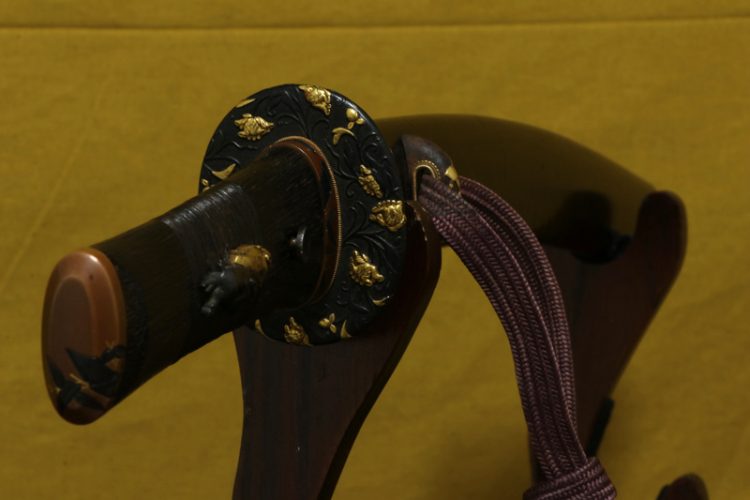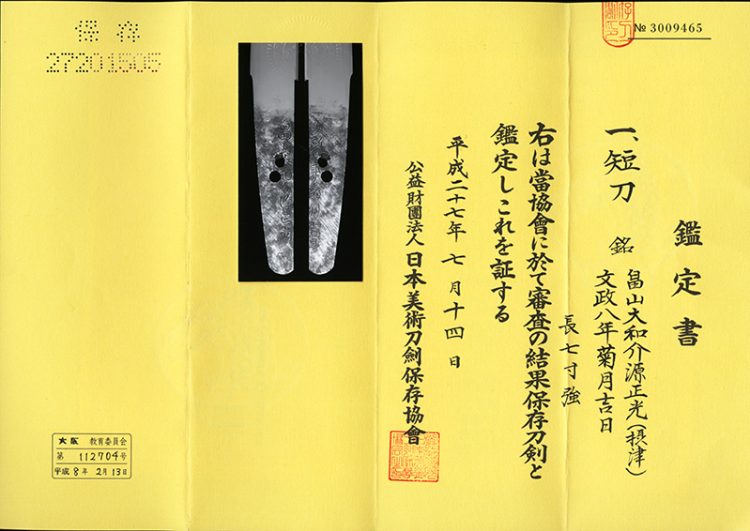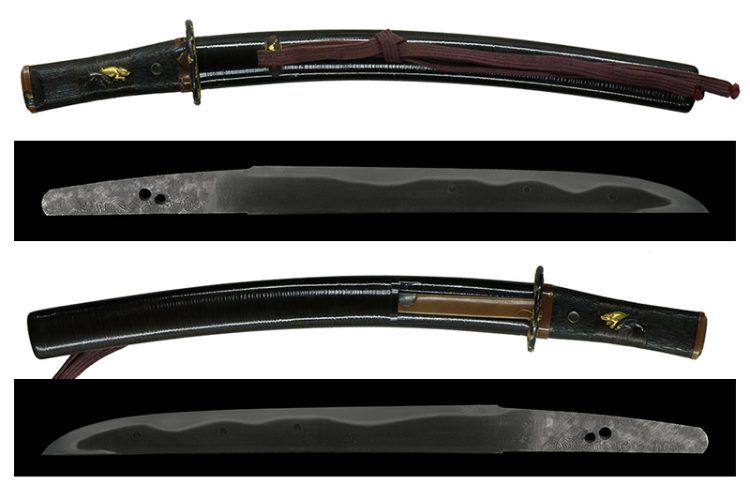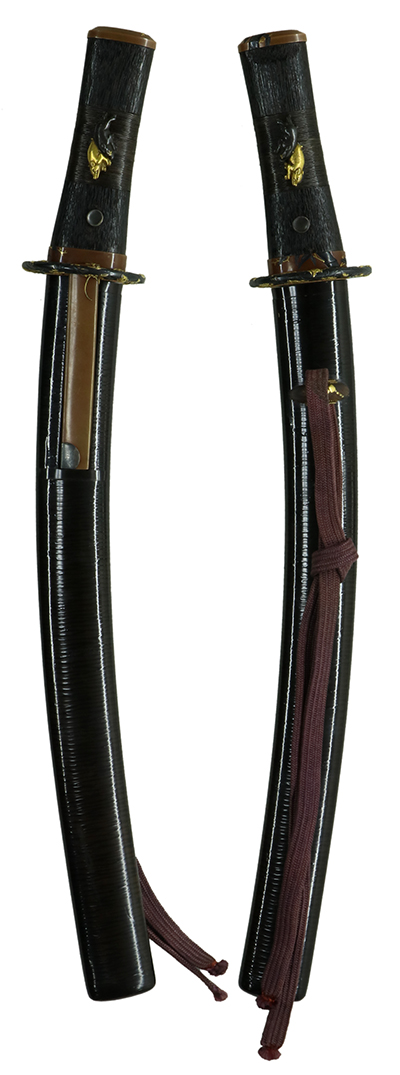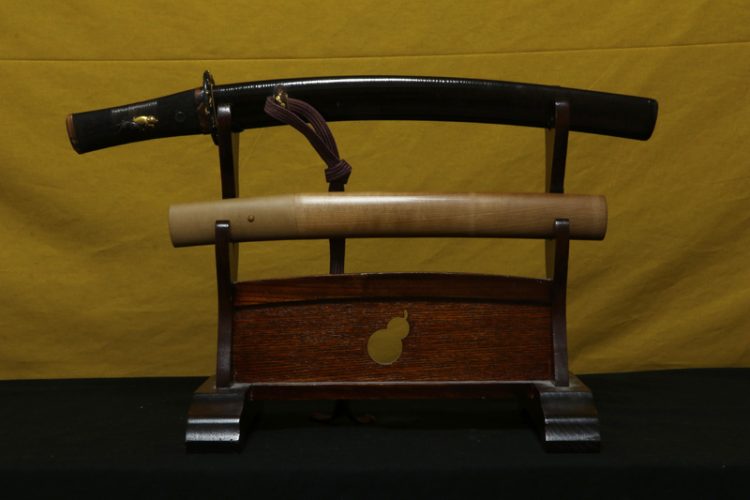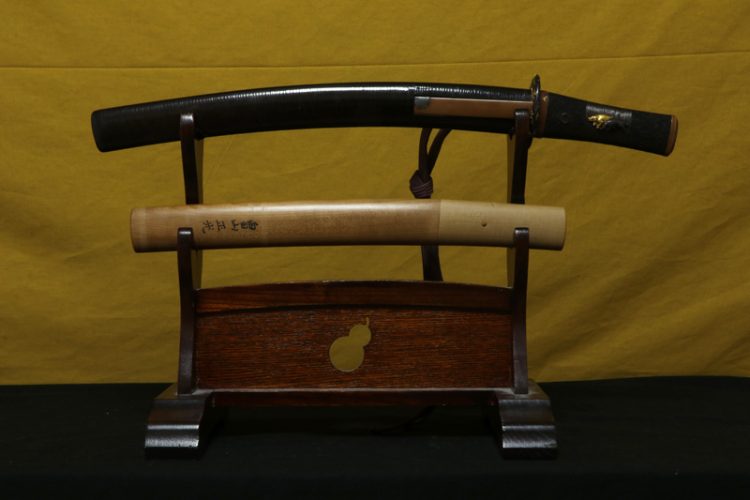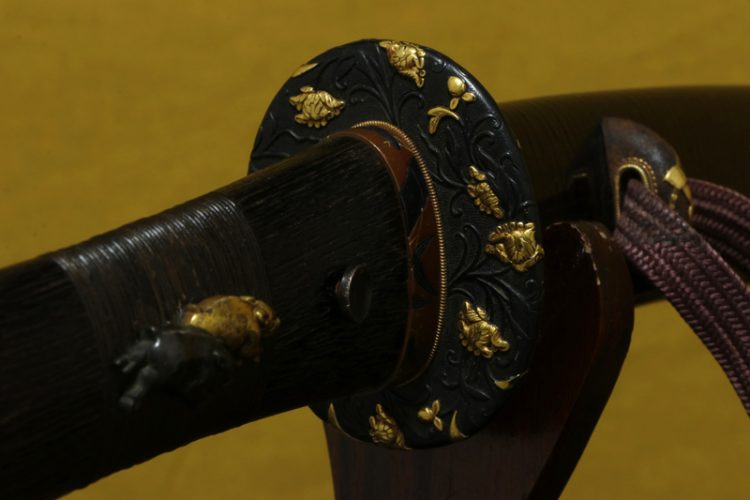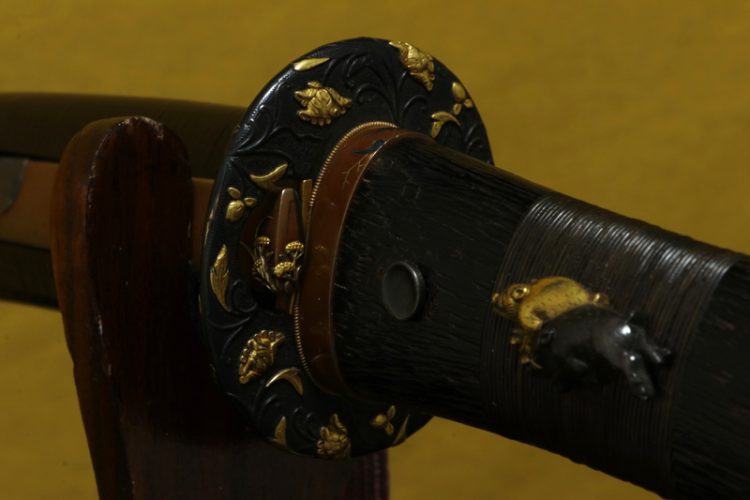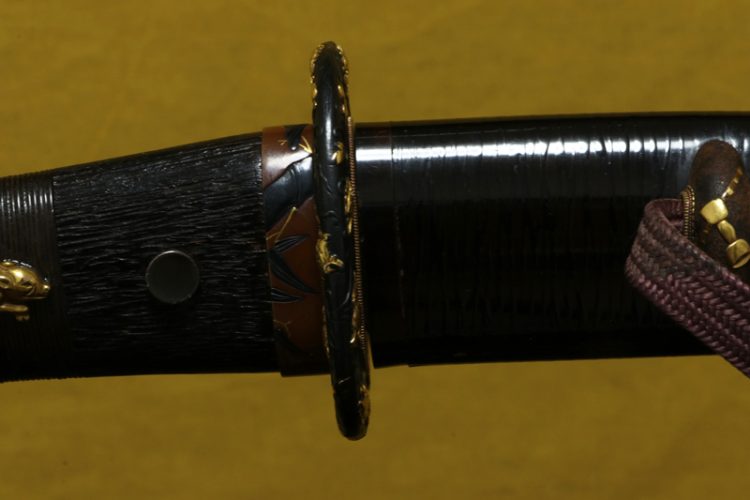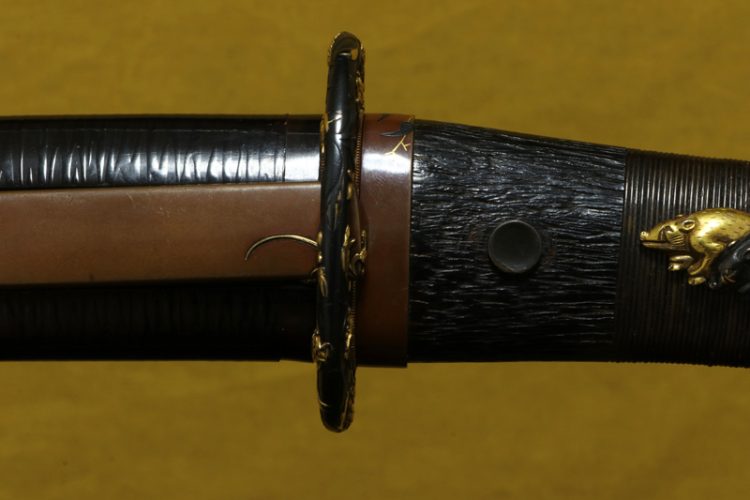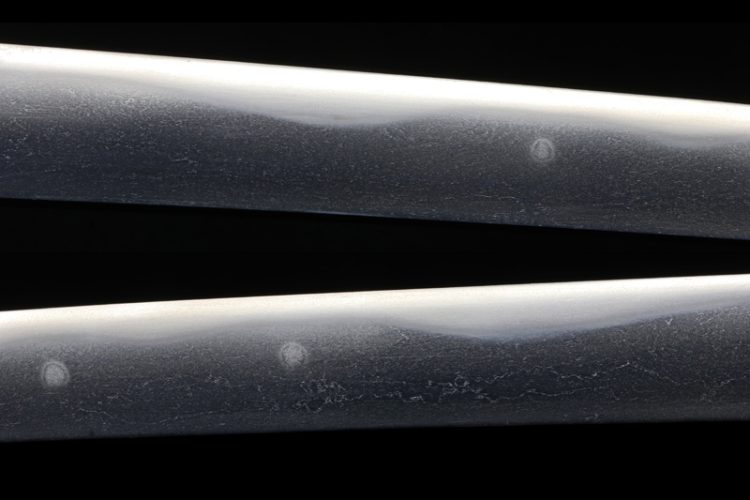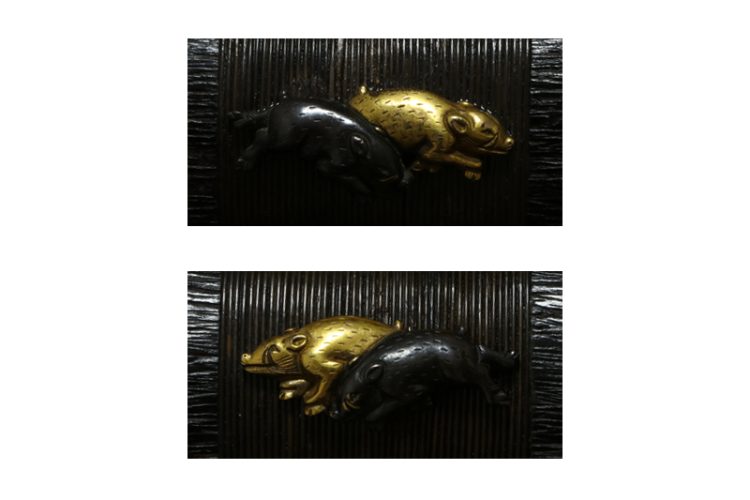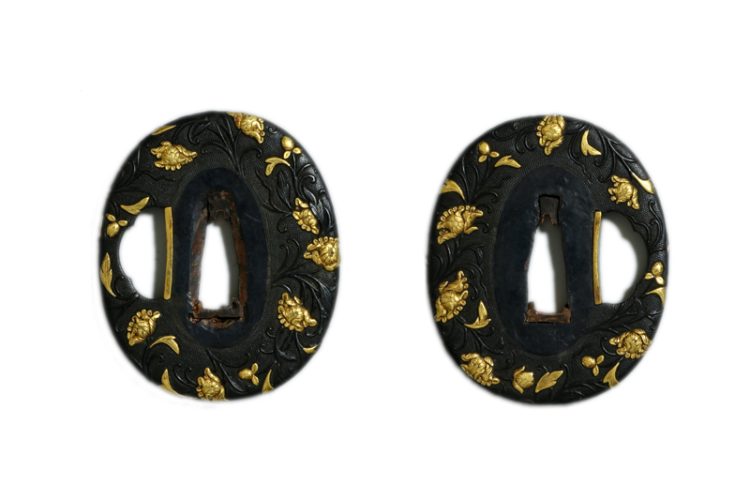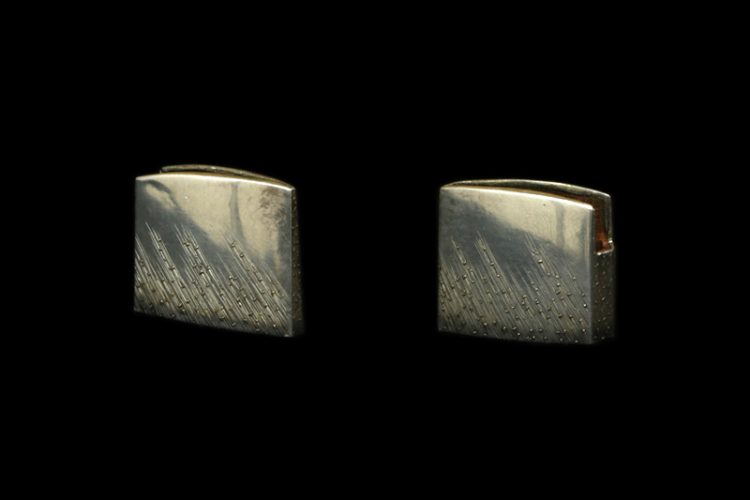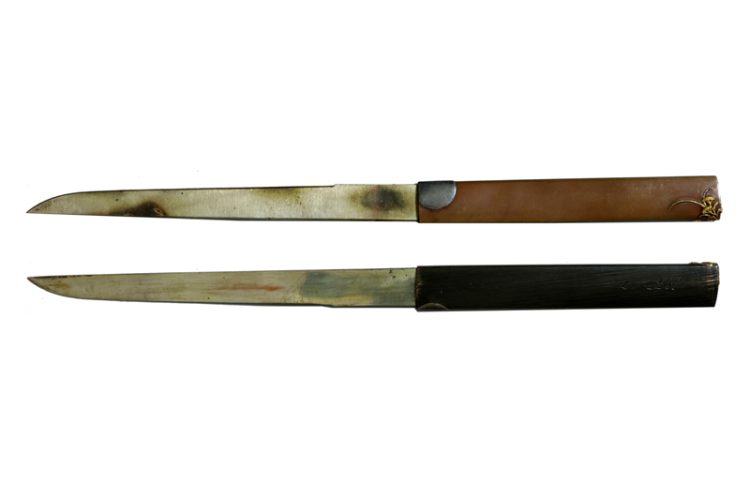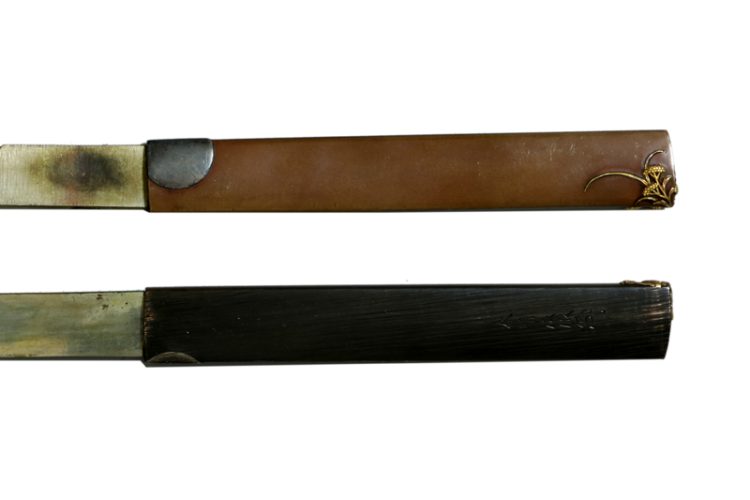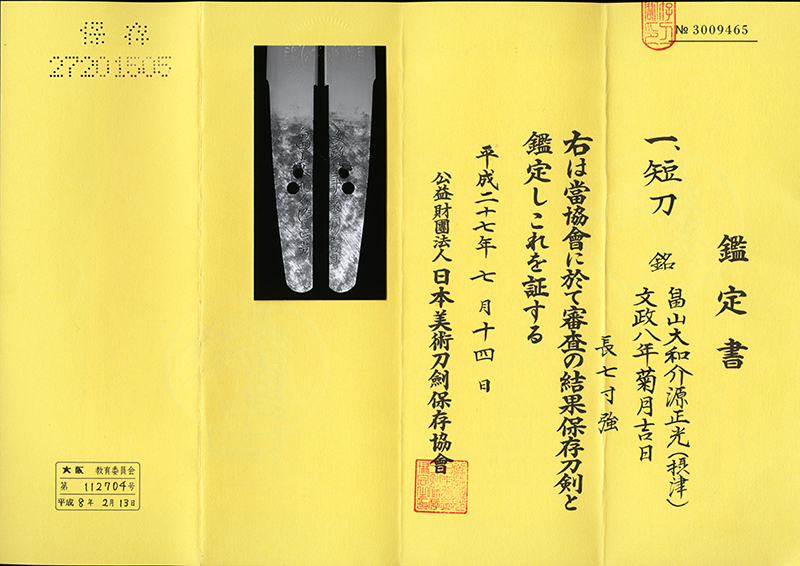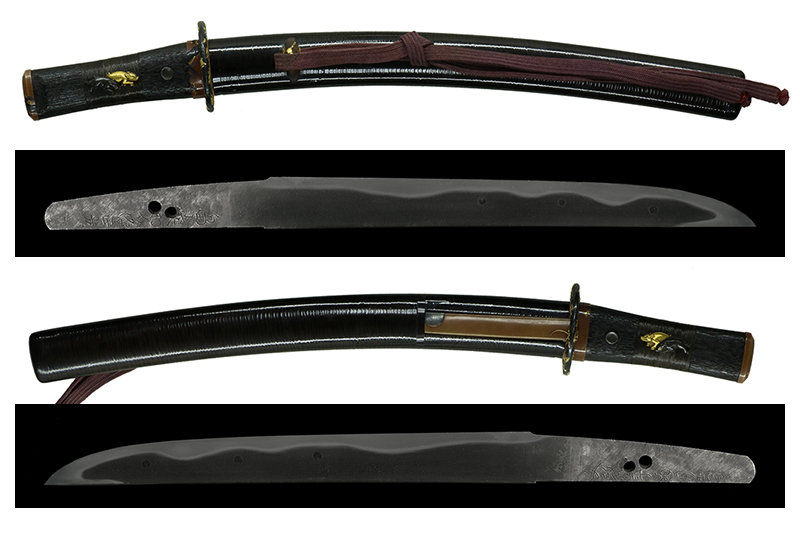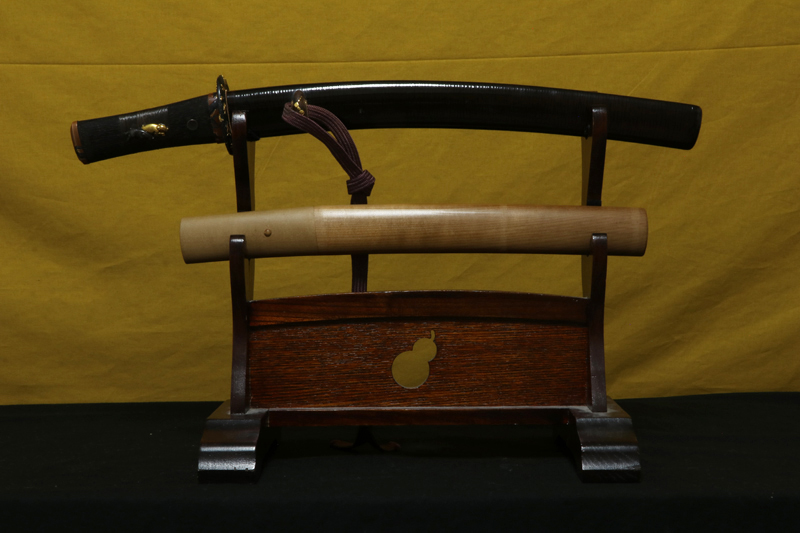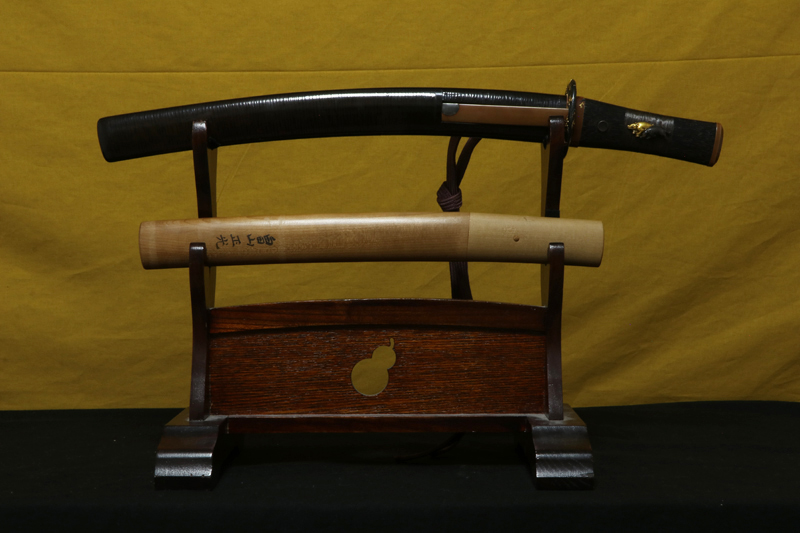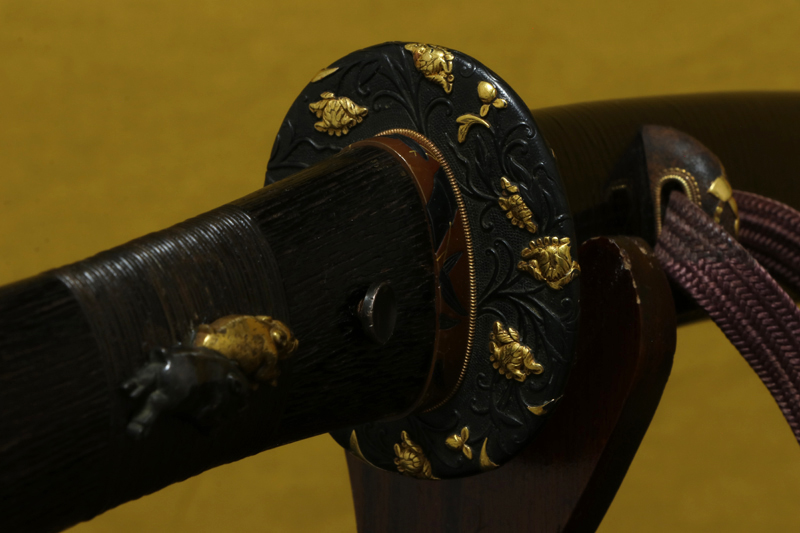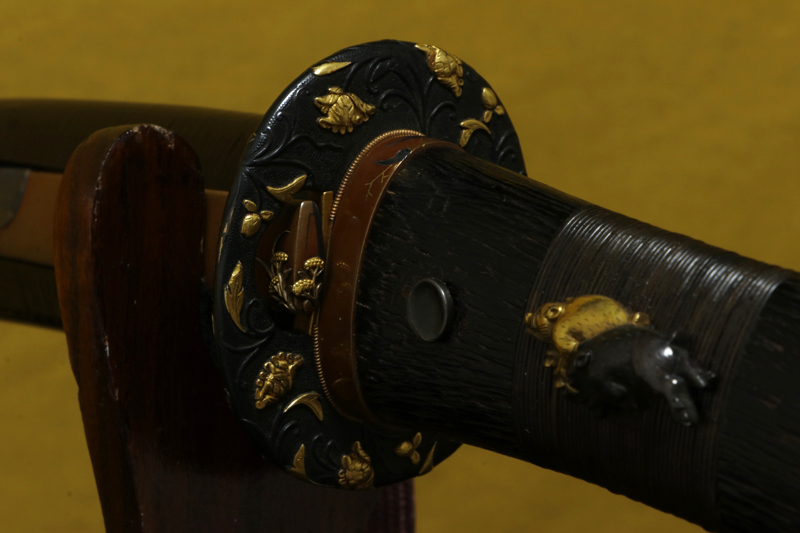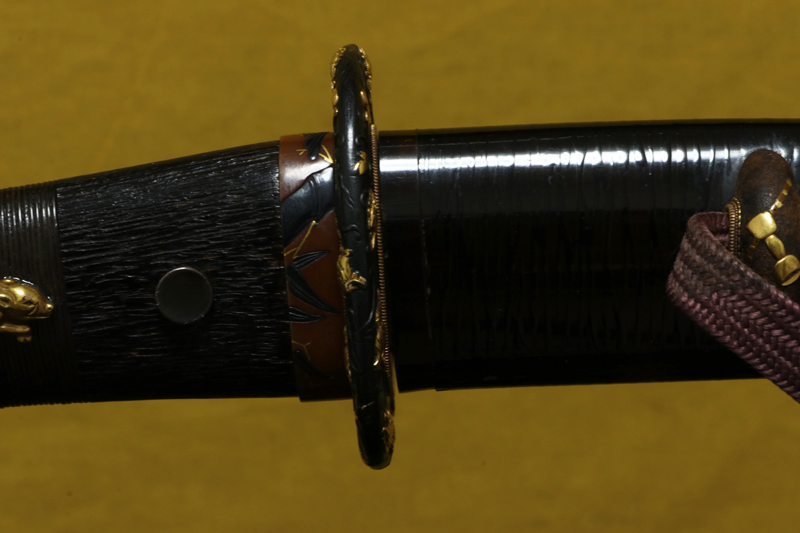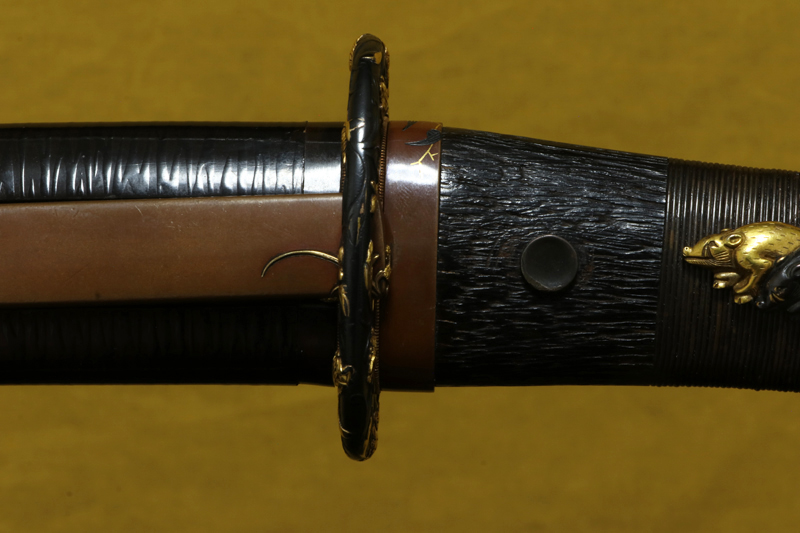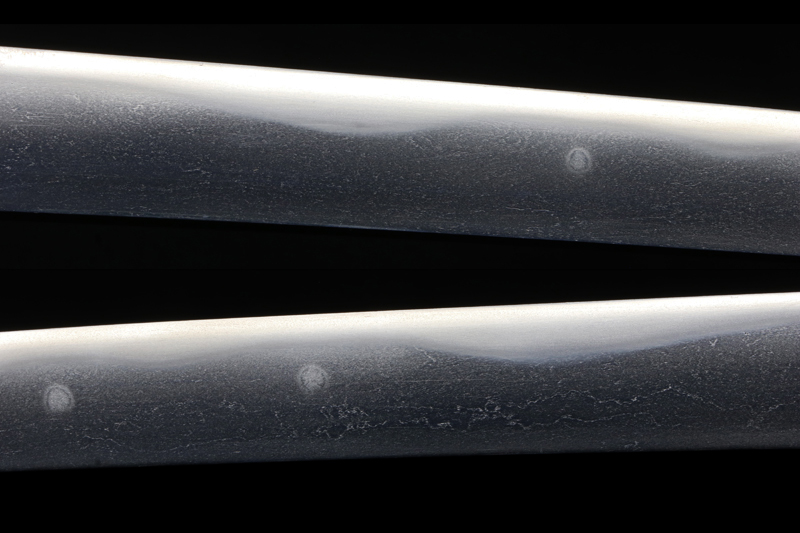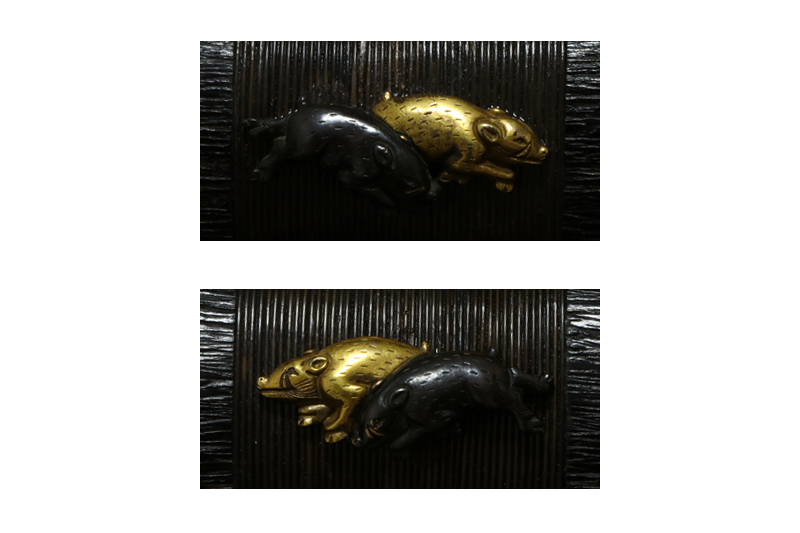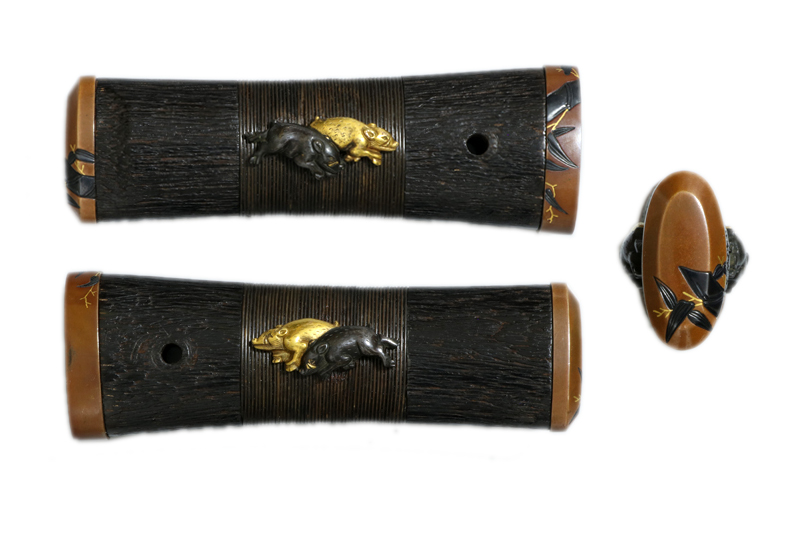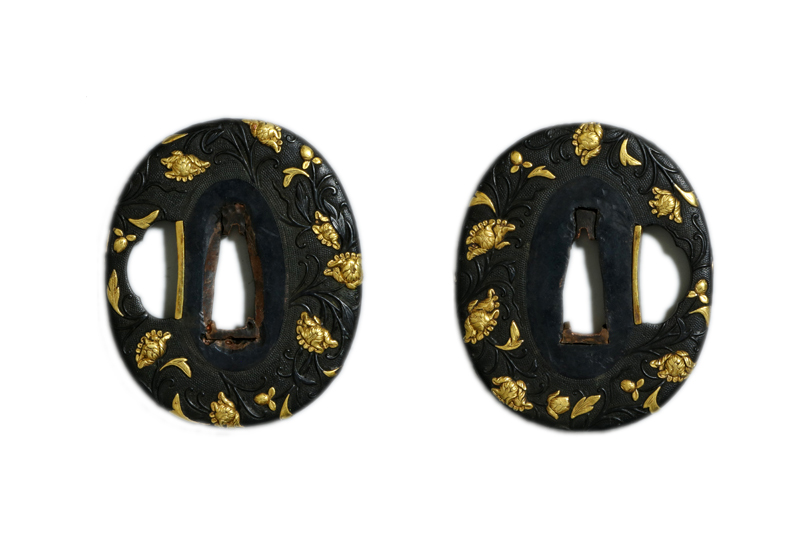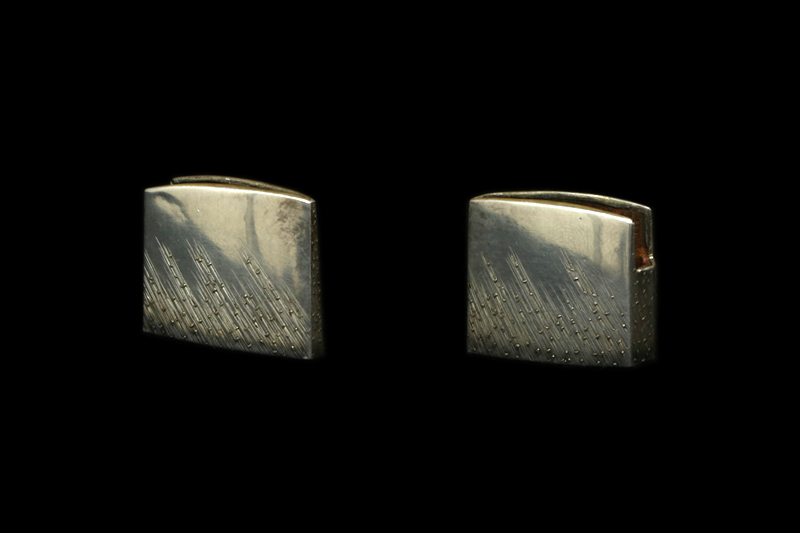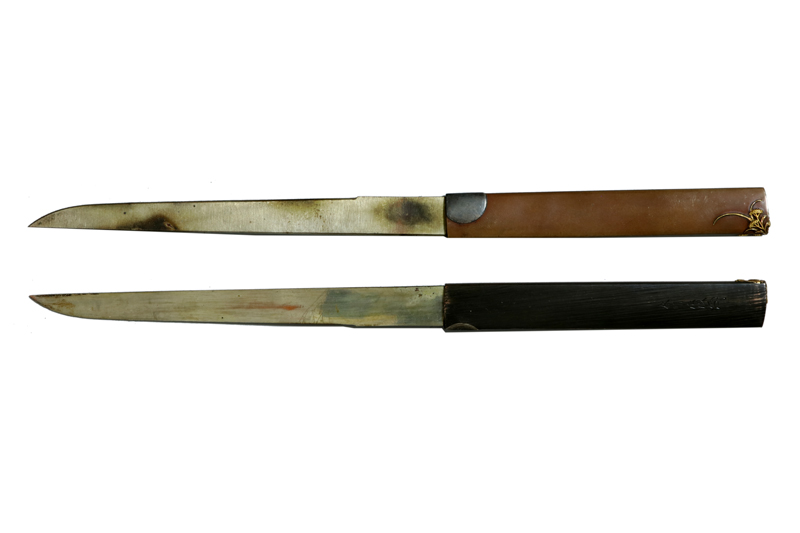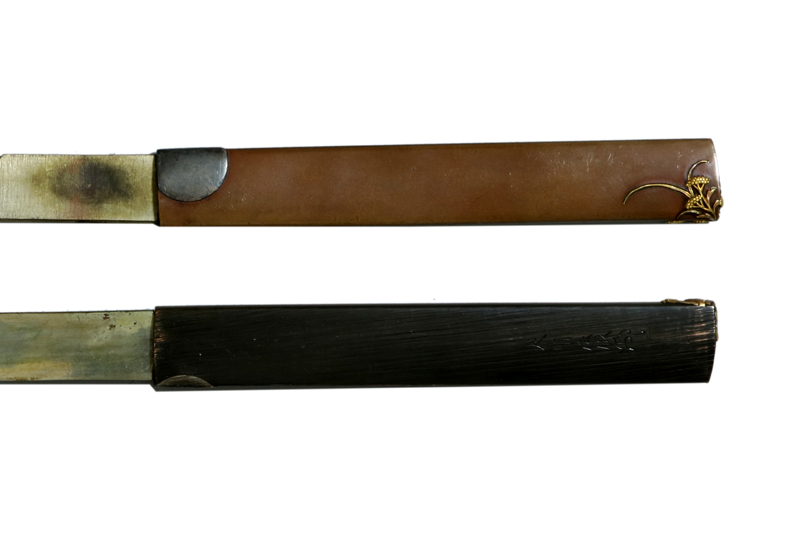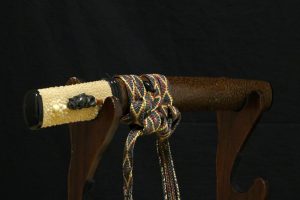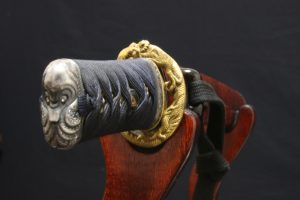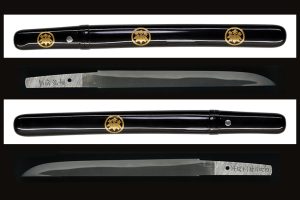説明
「刀姿 sword figure」
平造り庵棟、身幅重尋常、反り無しふくら程良く枯れる。茎は生で化粧鑢がかかり、茎尻は栗尻。
「地鉄 jigane」
地鉄は板目肌に小板目が交じった地鉄が良く詰み、地景入り、地沸が厚くつく。
「刃紋 hamon」
刃紋は、濤乱刃、刃緑微塵に沸が付き、砂流しかかる。刃中には金筋働く。帽子は乱れ込み小丸に返る。
「特徴 detailed」
畠山大和介正光、初名正次、父親の正光(正清)襲名し正光と名乗る。先祖は和泉守源正清で寛文頃より代々堺に住する、料理道具にも名品があり、特に薄刃包丁の名手といわれる。
師は初め安寿、後に水心子正秀に入門する。銘は「紀府畠山大和介源正光」「紀府畠山大和介源正光」「於偕楽園畠山大和介源正光謹造之」とも切る。於偕楽園と銘を切ることから、水戸でも打つと言われていますが、偕楽園は紀州藩別邸西浜御殿(現在は和歌山工業高校が建つ)に徳川治宝が作らせた庭園の事で、お庭焼きが有名。正光の刀も徳川治宝公の命により西浜御殿内の偕楽園で鍛刀したものと思われる。なお畠山大和介正光の刀は、大塩平八郎の愛刀としても有名です。
本作は文政8年の作品で、正光がまだ若い頃の作品です。そのため優美な中にも力強さを感じる短刀です。
Hatakeyama Yamato-no-suke Masamitsu, originally named Masatsugu, later succeeded his father Masamitsu (also known as Masakiyo) and took on the name Masamitsu. His lineage traces back to Izumi-no-Kami Minamoto no Masakiyo, and his family had resided in Sakai since the Kanbun era. The Hatakeyama family was also known for producing high-quality kitchen knives, particularly excelling in crafting usuba hōchō (thin-blade knives).
Masamitsu first studied under Anju and later became a disciple of Suishinshi Masahide. His signature (mei) varied and included inscriptions such as “Kifu Hatakeyama Yamato-no-suke Minamoto Masamitsu,” “Kishu Hatakeyama Yamato-no-suke Minamoto Masamitsu,” and “Oite Kairakuen Hatakeyama Yamato-no-suke Minamoto Masamitsu Kinzo Kore” (meaning “Respectfully forged at Kairakuen”). Due to this last inscription, it is believed that he also forged swords in Mito. However, the “Kairakuen” referred to here is likely the Kairakuen garden built by Tokugawa Harutomi within the Nishihama Palace, a Kishu Domain villa (now the site of Wakayama Technical High School). This garden is also known for its ceramic works (oniwayaki). It is thought that Masamitsu’s swords were forged at the Kairakuen within Nishihama Palace under Tokugawa Harutomi’s order.
Furthermore, swords by Hatakeyama Yamato-no-suke Masamitsu are famously known as being favored by Oshio Heihachiro, a prominent historical figure.
This particular piece dates to Bunsei 8 (1825) and was made during Masamitsu’s younger years. As such, it is a tanto that combines youthful elegance with a sense of strength and vitality.
「拵 Koshirae」
拵は幕末のオリジナルですが、コンディションは良好です。
ハバキ(habaki) :素銅地銀着一重の腰祐乗。
鍔(tsuba) : 赤銅魚子地秋草の図金色絵。
縁頭(fuchikashira) : 素銅地笹竹の図。
目貫(menuki) :赤銅地金色絵猪の図。
小柄(kotsuk) : 小柄袋は素銅と赤銅の張物で月の秋虫の図(銘は春明法眼 花押)。
柄(tsuka) :木目仕上げの柄に中心部分に鯨の髭が巻かれる。
鞘(saya) :焦茶色の黒の柾目模様。
「刀剣の状態 condition of blade」
研:良好です。
傷:欠点になるような傷は有りません。
